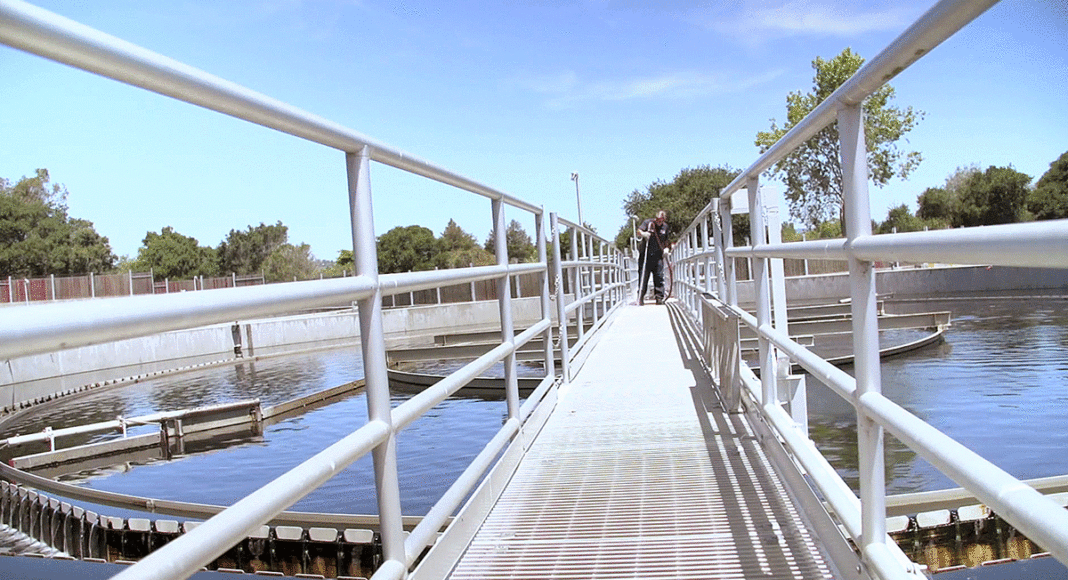Bruce Daniels, board chair for the Soquel Creek Water District, remembers feeling “very surprised” five years ago this month.
That’s when he got a late-night heads-up about a big change afoot in regional water planning. The next day, on the morning of Aug. 19, 2013, then-Mayor Hilary Bryant and City Manager Martín Bernal jointly announced their intention to pull the plug on a planned desalination facility—one on which the city had collaborated with Soquel Creek Water District—for more than a decade.
This, of course, was not about pulling one over on the over-stressed mid-county water district or its drying groundwater basin underneath. There were real environmental and political questions about the proposed desal plant, a facility likely slated for Santa Cruz’s Westside, and whether or not it could have passed on the ballot the following year, given the growing swell of opposition from the activist group Desal Alternatives.
Still, the decision left the two districts in very different places. Santa Cruz has significant water shortage issues, to be sure—namely a small reservoir and the demands of increased water flows for fish habitat during the dry seasons. But due south, the problems are more immediate for the city’s neighbors. The Soquel Creek district’s over-stressed Purisima Aquifer faces threats of creeping seawater intrusion. City water customers, on the other hand barely rely on groundwater.
Daniels was acutely aware of the district’s quickly dwindling resources.
“The biggest thing was we lost time,” Daniels says. “The big difference between us and them is that the city can have this terrible drought and try to get people to reduce water, but once it passes and it rains again, everyone’s OK. Over here, if we have a problem, we get saltwater intrusion, and the wells are ruined. We have a risky situation that the city just doesn’t have.”
For Soquel Creek’s next chapter, Daniels says that district leaders can’t wait around for anyone else, and so as they plot their way out of a water crisis, they’re doing it with the assumption that they can’t fully trust anyone but themselves.
That next chapter is now being written, and a new project could be underway in the coming years. The chosen project’s name is Pure Water Soquel, and the draft environmental impact report [EIR] is currently out, with comments due Aug. 13.
Pure Water Soquel would involve treating and purifying local wastewater, but not for a “toilet to tap” project, where purified water goes right back into the drinking supply. (That would be direct potable reuse, which no California water district has yet implemented, although it’s likely only a matter of time before it starts happening in the drought-prone Golden State.)
This local undertaking would instead use indirect potable reuse (IPR), which involves pumping highly treated recycled water into the ground—in this case, the Purisima—via injection wells. The additional supply prevents seawater intrusion, rests local wells and augments water levels, which ultimately get pumped back out for use.
The practice of IPR is already in place in six California water districts, and others are moving forward with their own projects, including one on the Monterey Peninsula called Pure Water Monterey. The product is generally well received. A recent study out of UC Riverside found that customers preferred IPR water to ordinary run-of-the-mill tap water, putting it basically on par with bottled water.
Pure Water Soquel’s EIR has yet to make a huge splash. The considerations in it were mostly minor, with the biggest impacts being noise from construction and drilling, which were both deemed “significant and unavoidable.”
Daniels says customers are ready for the board to do something. “They want something timely. They are tired—and I’m glad they are—of sitting around, talking about it and doing studies,” he says.
Soquel Creek Water District is keeping other water options on the table, too, including the option of buying desalinated water from Moss Landing’s yet-to-be-approved DeepWater Desal plant, although that’s generally seen as a long shot. There’s also the possibility of excess river water transfers from Santa Cruz to Soquel Creek’s wells or to its customers directly—something city staffers have been exploring and studying. That partnership is the city’s number one preferred water supply option. During dry summers, Santa Cruz would, in theory, be able to eventually pump out water and get some back.
A chemistry test ordered by the Santa Cruz Water Board recently explored the possibility of pumping Santa Cruz water through Soquel Creek Water District’s pipes. Santa Cruz Water Director Rosemary Menard says it was a big enough success that the agencies could start sharing flows as early as this winter.
If water swaps don’t work, Santa Cruz may pursue a recycled water project of its own. If the Pure Water Soquel project happens, however, that would leave less water for the city of Santa Cruz to work with.
Per the Water Supply Advisory Committee’s recommendations, the project of last resort would be desal.
In the spirit looking at regional solutions, the Mid-County Groundwater Agency—made up of local elected and water board members—has been meeting for more than two years at Simpkins Family Swim Center.
The group gathers every other month to talk about projects, how to share the basin and general collaboration.
These multi-agency groups are mandated by a 2014 state law, but the mid-county group is further along than most, given the severity of the Purisima’s overdraft issues.
After all, it’s never too late to work together—at least while there’s still water in the ground.














Bruce and Tom are sending us down an overly expensive and unnecessary path. We cannot afford their so called solution. They are politically and technically inept.